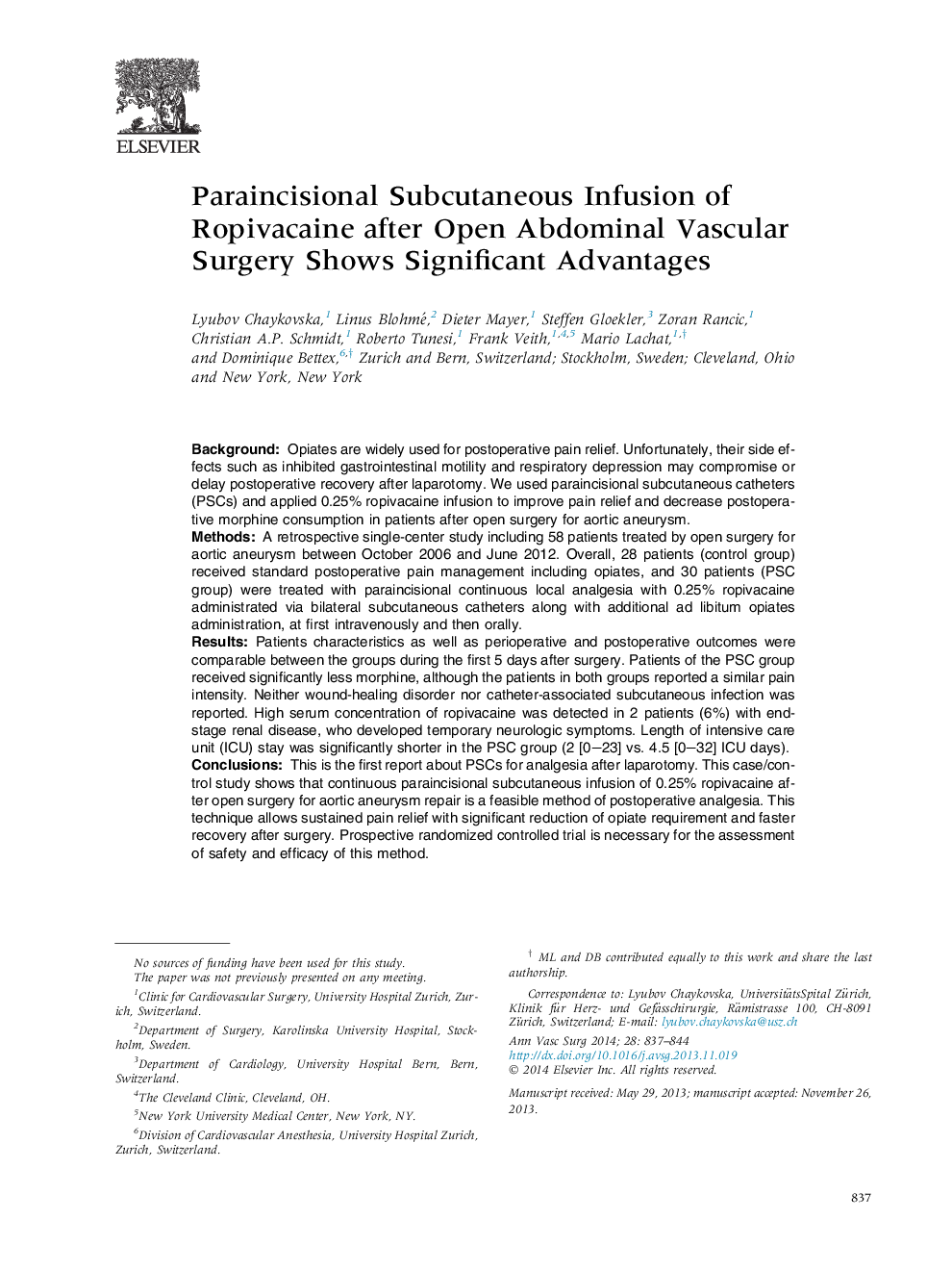| کد مقاله | کد نشریه | سال انتشار | مقاله انگلیسی | نسخه تمام متن |
|---|---|---|---|---|
| 2886676 | 1574211 | 2014 | 8 صفحه PDF | دانلود رایگان |
BackgroundOpiates are widely used for postoperative pain relief. Unfortunately, their side effects such as inhibited gastrointestinal motility and respiratory depression may compromise or delay postoperative recovery after laparotomy. We used paraincisional subcutaneous catheters (PSCs) and applied 0.25% ropivacaine infusion to improve pain relief and decrease postoperative morphine consumption in patients after open surgery for aortic aneurysm.MethodsA retrospective single-center study including 58 patients treated by open surgery for aortic aneurysm between October 2006 and June 2012. Overall, 28 patients (control group) received standard postoperative pain management including opiates, and 30 patients (PSC group) were treated with paraincisional continuous local analgesia with 0.25% ropivacaine administrated via bilateral subcutaneous catheters along with additional ad libitum opiates administration, at first intravenously and then orally.ResultsPatients characteristics as well as perioperative and postoperative outcomes were comparable between the groups during the first 5 days after surgery. Patients of the PSC group received significantly less morphine, although the patients in both groups reported a similar pain intensity. Neither wound-healing disorder nor catheter-associated subcutaneous infection was reported. High serum concentration of ropivacaine was detected in 2 patients (6%) with end-stage renal disease, who developed temporary neurologic symptoms. Length of intensive care unit (ICU) stay was significantly shorter in the PSC group (2 [0–23] vs. 4.5 [0–32] ICU days).ConclusionsThis is the first report about PSCs for analgesia after laparotomy. This case/control study shows that continuous paraincisional subcutaneous infusion of 0.25% ropivacaine after open surgery for aortic aneurysm repair is a feasible method of postoperative analgesia. This technique allows sustained pain relief with significant reduction of opiate requirement and faster recovery after surgery. Prospective randomized controlled trial is necessary for the assessment of safety and efficacy of this method.
Journal: Annals of Vascular Surgery - Volume 28, Issue 4, May 2014, Pages 837–844
